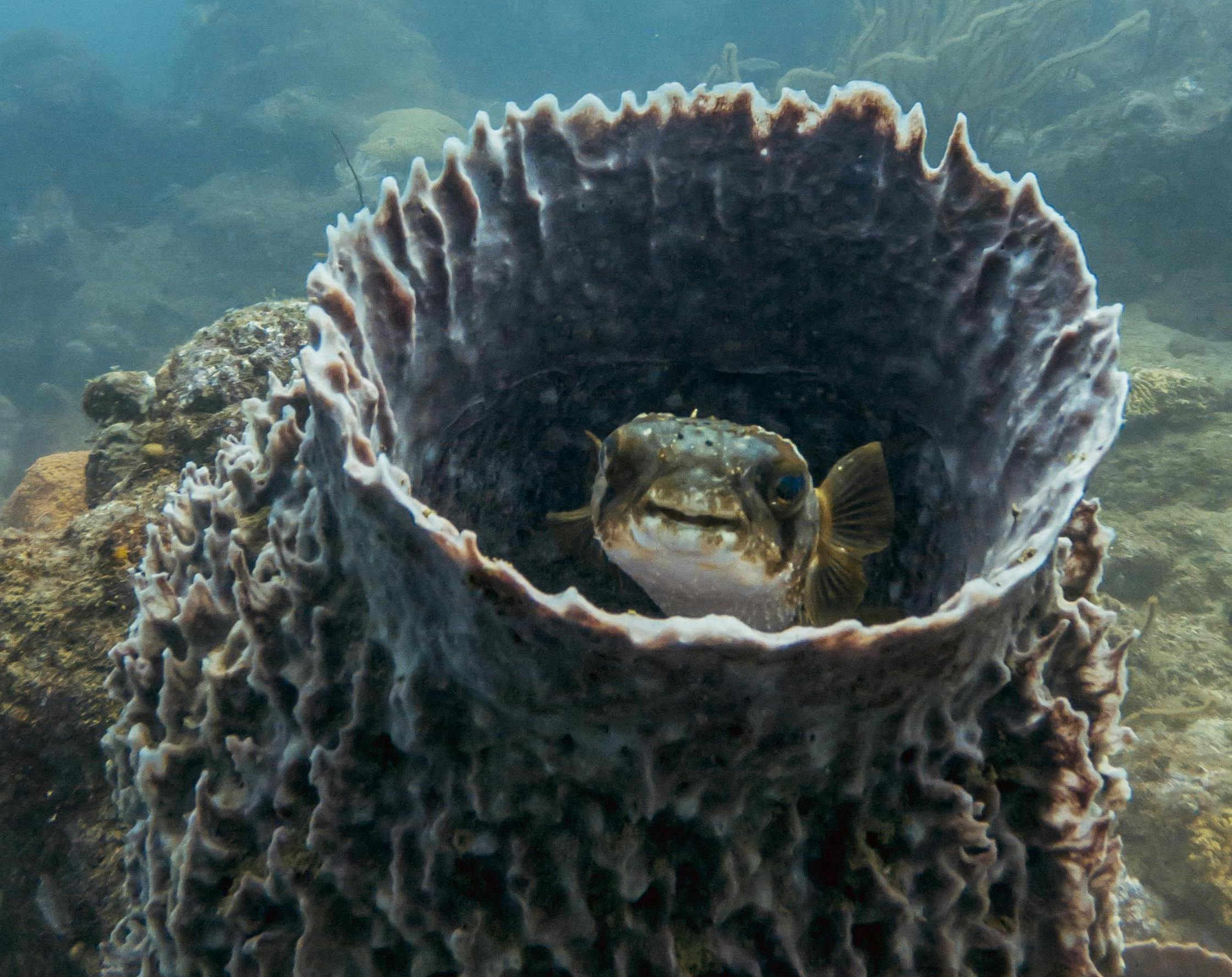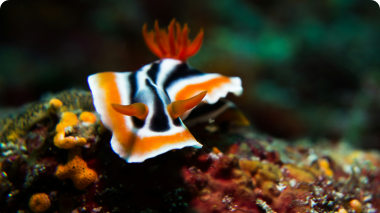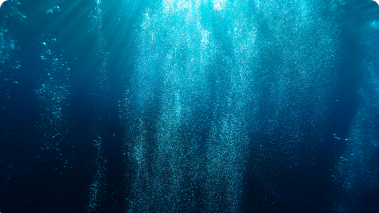Like an obscure, alien underworld, the deep-sea beholds unique habitats and wonderfully weird creatures, from fish that walk to spikey cucumbers and Casper the Octopod! Covering 65%of the planet’s surface, the deep-sea is the largest ecosystem on Earth, yet one of the least explored. However, a recent study in Communications Biology found that sea sponges can hold a genetic catalogue of deep, salty secrets.
Challenges of the deep
With an average depth of more than 3,500 metres (11,000 feet), the deep-sea is a costly ecological frontier. Immense pressures, near freezing temperatures and pitch-black darkness makes studying life in the deep one of biodiversity’s greatest tests. Conventional methods to collect basic data near the ocean surface are prohibitively expensive and technically challenging in deeper waters.
Despite these challenges, it is crucial we know what species live on the seafloor, and where to find them. Without this knowledge, rare and fragile habitats including cold-water coral and sponge gardens that support an array of marine life are threatened by overexploitation. Including, bottom trawling, oil site prospecting and deep-sea mining of rare metals for green technology that continue to increase.
In recent years, a relatively low-budget approach to collecting genetic data from seawater has revolutionised biodiversity monitoring and management in remote and hard-to-access areas, such as the deep sea. Every living thing sheds DNA into their environment, including the air, soil or water around them. This genetic material is termed ‘environmental DNA’, or ‘eDNA’ and can be used to identify different species.
A mere 500 ml sample of seawater can contain thousands of shed animal cells, which are used to extract DNA and catalogue who recently swam past or which species may be living nearby. However, results from these genetic surveys are commonly flooded by single-celled microbes but capture relatively little information on corals, fish and other large marine animals. Studies have also revealed the method is restricted to capturing DNA within a relatively short temporal window.
Sea sponges are a natural catalogue of eDNA
Researchers from the National Museum of Madrid have recently revealed a new ‘high resolution’ method for sampling eDNA by harnessing the natural filtering power of sea sponges living in the deep-sea. The novel approach captures a goldmine of genetic data, uncovering ‘unprecedented biodiversity’ says Dr. Ana Riesgo – lead author of the study.
Sea sponges are simple, stationary creatures that continually filter through large volumes of water, naturally accumulating microscopic particles such as cells shed by other animals which they consume as food. Compared to classic eDNA seawater samples, sea sponges can harbour genetic material from across a far larger geographic footprint. This is likely because of their enormous filtering capacity, with a 1kg sponge pumping up to 24,000 litres of water per day. In a study from 2022 certain sponges were also found to capture eDNA across a longer time period than sea water samples, making them an incredibly valuable new inventory of eDNA.
Sea sponges revealNorth Atlantic deep-sea biodiversity
The team sampled small, 1 cm sized pieces of tissue from 97 deep-sea sponges across four species from several regions of the Arctic and North Atlantic. The remarkable accuracy of eDNA from natural sponge samplers allowed researchers to identify over 400 animal species from the region, including several ‘indicator species’ like corals, which are used to identify vulnerable marine ecosystems (VME’s). VME’s are ecosystems which are highly vulnerable to human pressures and protected through a policy accelerated by the UN to protect against destructive fishing practices. Identifying where these indicator species are in the deep-sea, and their subsequent VME designation, currently faces significant financial, technical and logistical hurdles. However, the success of ‘sponge DNA’ biomonitoring provides a transformative, cost-effective new tool to inform deep-sea management and protection.
Unexpectedly, non-native species such as the North American horseshoe crab were also documented by the study. The team suggest ‘sponge DNA’ can reliably detect species undergoing a shift in their distribution due to rapid climate change. For instance, Riesgo’s team found evidence of a phenomenon called “atlantification”, whereby typically Atlantic dwelling species are gradually colonising warming arctic waters.
The future of sponge DNA
Human-induced destruction of unexplored, deep-sea habitats has wide-ranging implications and requires global-scale management. Notably, in addition to collecting samples following standard eDNA procedures, Riesgo’s team also tested eDNA recovery from improperly collected or poorly stored sponge samples. This will allow scientists to explore the potential for scalable, cost-effective biomonitoring from existing sea sponge collections, such as those unintendedly caught by trawling vessels.
Looking forward, the team aim to identify which species of sponge is best suited to naturally capturing and storing the largest inventories of eDNA. They hope this will enable an even greater level of detailed data collection and further improve cost-efficiency for deep-sea biodiversity monitoring.
Source: Gallego, R., Arias, M.B., Corral-Lou, A. et al. (2024) North Atlantic deep-sea benthic biodiversity unveiled through sponge natural sampler DNA. Commun Biol 7, 1015.







